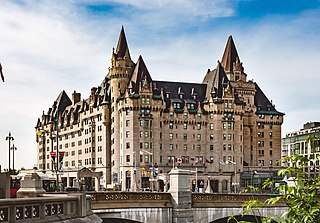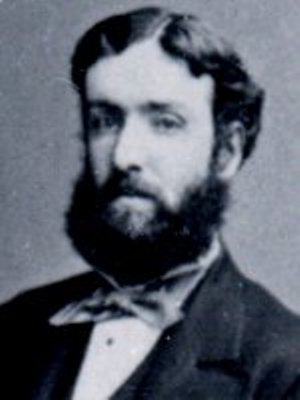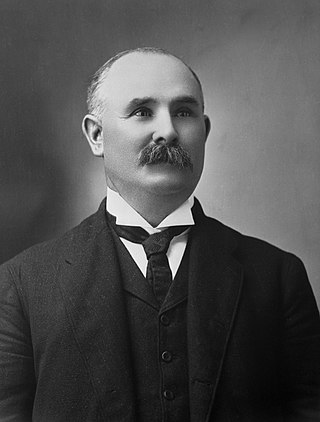
The Fairmont Château Laurier is a 660,000-square-foot (61,000 m2) hotel with 429 guest rooms in the downtown core of Ottawa, Ontario, Canada, located near the intersection of Rideau Street and Sussex Drive and designed in a French Gothic Revival Châteauesque style to complement the adjacent Parliament buildings. The hotel is above the Colonel By Valley, home of the Ottawa Locks of the Rideau Canal, and overlooks the Ottawa River. The main dining room overlooks Major's Hill Park. The reception rooms consist of the Wedgewood-blue Adam Room, the Laurier Room defined with Roman columns, the Empire-style ballroom, and the Drawing Room decorated with cream and gold plaster ornament. The hotel was designated a national historic site in 1980.

Government House of British Columbia is the official residence of the lieutenant governor of British Columbia in Victoria and is vice-regal residence. It has casually been described as "the Ceremonial Home of all British Columbians." It stands in the provincial capital on a 14.6-hectare (36-acre) estate at 1401 Rockland Avenue; while the equivalent building in many countries has a prominent, central place in the capital, the site of British Columbia's Government House is relatively unobtrusive within Victoria, giving it more the character of a private home.

Francis Mawson Rattenbury was a British architect although most of his career was spent in British Columbia, Canada, where he designed the province's legislative building among other public commissions. Divorced amid scandal, he was murdered in England at the age of 67 by his second wife's lover.

Bruce Price was an American architect and an innovator in the Shingle Style. The stark geometry and compact massing of his cottages in Tuxedo Park, New York, influenced Modernist architects, including Frank Lloyd Wright and Robert Venturi.

Malbone is one of the oldest mansions in Newport, Rhode Island. The original mid-18th century estate was the country residence of Col. Godfrey Malbone of Virginia and Connecticut. The main house burned down during a dinner party in 1766 and the remaining structure sat dormant for many years until New York lawyer Jonathan Prescott Hall built a new roughly 5,800 sq ft (540 m2) castellated residence directly on top of the old ivy-covered ruins.

Châteauesque is a revivalist architectural style based on the French Renaissance architecture of the monumental châteaux of the Loire Valley from the late fifteenth century to the early seventeenth century.

Sutton House is a Grade II* listed Tudor manor house in Homerton High Street, in Hackney and is in London Borough of Hackney, London, England. It is owned by the National Trust.

Patrick Burns was a Canadian rancher, meat packer, businessperson, senator, and philanthropist. A self-made man of wealth, he built one of the world's largest integrated meat-packing empires, P. Burns & Co., becoming one of the wealthiest Canadians of his time. He is honoured as one of the Big Four western cattle kings who started the Calgary Stampede in Alberta in 1912.

The Hart House, sometimes known as the Hart mansion, is a residence located in the Patterson Heights neighbourhood of Calgary, Alberta, Canada. Once owned by Stu Hart, it was home to his extensive professional wrestling family for 52 years from October 1951 until Stu Hart's death in October 2003. While not built for them nor any longer under ownership of the Harts, the mansion continues to be referred to as the Hart House.

Rutherford House is a historic building and museum in the Strathcona area of Edmonton, Alberta, Canada. The structure was the home of the first Premier of Alberta, Alexander Cameron Rutherford, from 1911 to 1940, and has subsequently been designated as an Alberta provincial historic site.

Central Memorial Park is a park located in central Calgary's Beltline district. Sometimes referred to as Central Park or as Memorial Park, the area is home to the Memorial Park Library, an equestrian statue of Russell Lambert Boyle, and a cenotaph. The former Colonel Belcher Veterans Hospital was located across 4th street SW to the west, now the site of the Sheldon M. Chumir Centre. The Memorial Park Library and the surrounding park were named a National historic site in 2018

The Sheldon M. Chumir Centre is a health centre located in Calgary, Alberta. The facility is administered by the Calgary Zone of Alberta Health Services. The centre provides 24/7 Urgent Care services but is not a full-service hospital and does not admit any patients for overnight stays.

The Burns Building is a historic six-story building located in downtown Calgary, Alberta. It sits at 237 8 Avenue SE on the end of Stephen Avenue overlooking Olympic Plaza and City Hall.

Lougheed House, or as it was originally known Beaulieu, is a National Historic Site located in the Beltline district of Calgary, Alberta. Originally constructed in 1891 as a home for Senator James Alexander Lougheed KCMG PC KC and his wife Isabella Clarke Hardisty, the structure has since become an iconic heritage building in Calgary. Lougheed House is operated by Lougheed House Conservation Society, an independent, non-profit society devoted to the restoration and public enjoyment of the historic house and its Gardens.

Le goût Rothschild describes a detailed, elaborate style of interior decoration and living which had its origin in France, Britain, Austria, and Germany during the nineteenth century, when the rich, famous, and powerful Rothschild family was at its height. The Rothschild aesthetic and life-style later influenced other rich and powerful families, including the Astors, Vanderbilts and Rockefellers, and became hallmarks of the American Gilded Age. Aspects of le goût Rothschild continued into the twentieth century, affecting such designers as Yves Saint Laurent and Robert Denning.

The Golden Lion is a pub in Fulham, in the London Borough of Hammersmith and Fulham, London, England. It is located on Fulham High Street, to the east of Fulham Palace Gardens. Built in 1455 it is reported as the oldest pub in Fulham and was rebuilt by one of its Victorian owners. Notable patrons include the playwrights Shakespeare and Fletcher as well as Bishop Bonner.

Mount Wilga House is a heritage-listed former residence and rehabilitation hospital at 2a Manor Road, Hornsby in the Hornsby Shire local government area of New South Wales, Australia. Its design is attributed to Henry Marcus Clark and was built from 1913 to 1914. It is also known as Mt Wilga. The property is privately owned. It was added to the New South Wales State Heritage Register on 2 April 1999.

Villa Mariënhof is a historic mansion with a garden located along the Bredaseweg in the Dutch city Tilburg. It was built between 1916 and 1918 as the residence of the family of a factory owner, and it was designed by Johan Wilhelm Hanrath. In 1986, it was inherited by Staatsbosbeheer, who first used Villa Mariënhof as an office and later rented it. The house itself, its teahouse, and the garden are rijksmonumenten.
The Embassy of Sweden in Ottawa is Sweden's diplomatic mission in Canada. The Swedish embassy in Canada represents the Swedish government in Canada and The Bahamas. The embassy is located in ByWard Market in the downtown core of the capital of Ottawa. Ambassador since 2023 is Signe Burgstaller. Sweden also has nine honorary consulates in Canada.






















